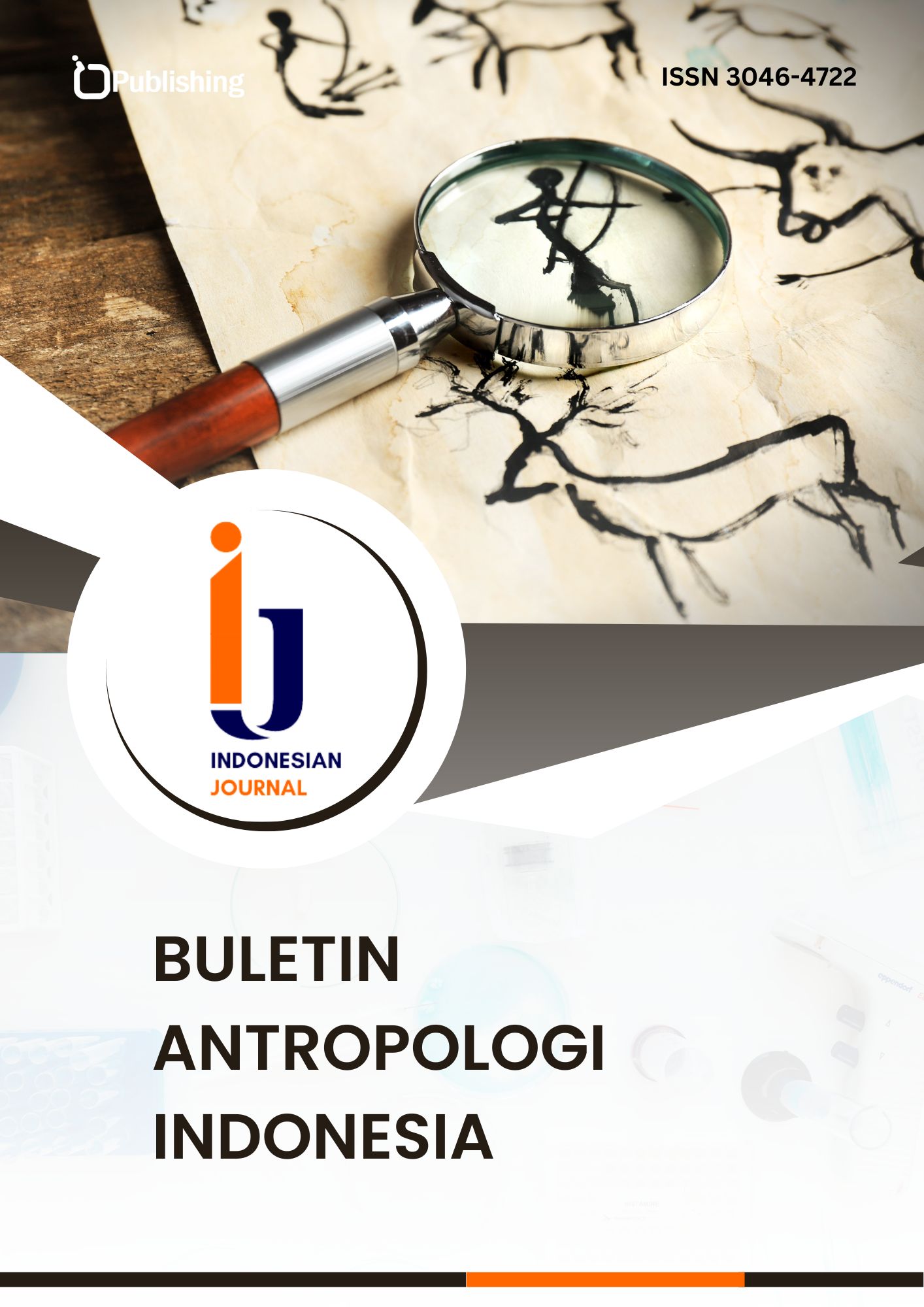Priority Factors Determining the Income of Woven Fabric Craftsmen in Sumbawa Regency: Process Hierarchy Analysis Approach
DOI:
https://doi.org/10.47134/bai.v2i2.3773Keywords:
Income, Craftsmen, Problem Hierarchy Analysis (AHP)Abstract
This article discusses the most dominant factors in the income of woven fabric craftsmen. The aim of this research is to determine the priority weight of factors that determine the income of woven fabric craftsmen in Sumbawa Regency. The research method used is quantitative using primary data. Data analysis was carried out using the Analytical Hierarchy Process (AHP), criteria and alternative procedures in AHP were obtained from references. Based on the results of previous research, the revenue criteria are increasing efficiency, increasing productivity and increasing competitiveness. Meanwhile, the alternatives from this research are work experience, education, working hours and age which influence the income of woven fabric craftsmen. Based on the results of global priority weighting in the AHP procedure, it is known that the most dominant factor influencing income is work experience with a weight of 40.98%, age with a weight of 23.04%, working hours with a weight of 20.30%, education with a weight of 15.69%.
References
Abalansa, S. (2021). Electronic waste, an environmental problem exported to developing countries: The good, the bad and the ugly. Sustainability (Switzerland), 13(9), ISSN 2071-1050, https://doi.org/10.3390/su13095302
Alfaris, R.E. (2023). Assessment of the First-and-Last-Mile Problem in Underserved Communities: Case Study in Camden City, NJ. Transportation Research Record, 2677(10), 153-166, ISSN 0361-1981, https://doi.org/10.1177/03611981231160536
Chen, C. (2023). An evaluation method of a roof photovoltaic access distribution network based on the weight of FAHP-improvement CRITIC combination. Dianli Xitong Baohu yu Kongzhi/Power System Protection and Control, 51(15), 97-108, ISSN 1674-3415, https://doi.org/10.19783/j.cnki.pspc.230072
Deni, G. R. (2023). Perancangan Perlengkapan Busana Berbahan Dasar Tenun Tradisional Sumbawa. JISIP (Jurnal Ilmu Sosial dan Pendidikan), 7(1), 819–832. https://doi.org/10.58258/jisip.v7i1.4595
Dou, Y. (2023). Has the Development of the Non-Timber Forest Products Industry Achieved Poverty Alleviation? Evidence from Lower-Income Forest Areas in Yunnan Province. Forests, 14(4), ISSN 1999-4907, https://doi.org/10.3390/f14040776
Farrah, A. I., Parlindungan, J., & Sasongko, W. (2023). Metode AHP Dalam Penentuan Prioritas Pengembangan Koridor Jalan Braga, Bandung Menurut Konsep Livable Street. Planning for Urban Region and Environment, 12(4), 143–150.
Gunawan, E., Oktiarso, T., & Ekawati, Y. (2023). Penentuan Prioritas Kriteria dan Peringkat Pemasok Menggunakan AHP-TOPSIS di PT Sutindo Raya Mulia. Jurnal Sains dan Aplikasi Keilmuan Teknik Industri (SAKTI), 3(1), 23–32. https://doi.org/10.33479/jtiumc.v3i1.45
Hinkel, J. (2023). Co-creating a coastal climate service to prioritise investments in erosion prevention and sea-level rise adaptation in the Maldives. Climate Services, 31, ISSN 2405-8807, https://doi.org/10.1016/j.cliser.2023.100401
Kouchesfahani, R. Naghizadeh (2023). Simultaneous Network Reconfiguration and Wind Power Plants Participation in Day-Ahead Electricity Market Considering Uncertainties. Energy Technology, 11(9), ISSN 2194-4288, https://doi.org/10.1002/ente.202300363
Lencucha, R. (2023). Framing policy objectives in the sustainable development goals: hierarchy, balance, or transformation?. Globalization and Health, 19(1), ISSN 1744-8603, https://doi.org/10.1186/s12992-023-00909-w
Li, M. (2024). Multiagent Deep Reinforcement Learning Based Incentive Mechanism for Mobile Crowdsensing in Intelligent Transportation Systems. IEEE Systems Journal, 18(1), 527-538, ISSN 1932-8184, https://doi.org/10.1109/JSYST.2024.3351310
Limato, R. (2022). Perceptions, views and practices regarding antibiotic prescribing and stewardship among hospital physicians in Jakarta, Indonesia: A questionnaire-based survey. BMJ Open, 12(5), ISSN 2044-6055, https://doi.org/10.1136/bmjopen-2021-054768
Masniadi, R., Asmini, A., & Asri, Y. (2019). Analisis Pendapatan Usaha Home Industri Kain Tenun (Kre Alang) di Dusun Sameri Desa Poto Kecamatan Moyo Hilir Kabupaten Sumbawa Tahun 2019. Jurnal Ekonomi & Bisnis, 7(2), 171–181. http://www.e-journallppmunsa.ac.id/index.php/jeb/article/view/533
Maturana, F. (2022). Intermediate cities and automobile parks in Chile. Territorial sustainability in check?. Iconos(72), 139-159, ISSN 1390-1249, https://doi.org/10.17141/iconos.72.2022.4866
Meo, M. E. A., Samin, M., & Manek, A. H. (2023). KABUPATEN NGADA Program Studi Pendidikan Geografi Universitas Nusa Cendana Kupang Menurut Undang-Undang No 3 Tahun 2014 industri merupakan bentuk kegiatan ekonomi yang mengolah bahan baku dan memanfaatkan sumber daya industri sehingga menghasilkan barang . 19, 140–154.
Mostafa, M. (2022). Fuzzy Analytic Hierarchy Process (FAHP) applied to evaluating the forest management approaches. Journal of Forest Science, 68(7), 263-276, ISSN 1212-4834, https://doi.org/10.17221/27/2022-JFS
Nugraha, R. K., Novandi, T., Wardhana, W. A., & Bagus, G. (2022). Analisis Strategi Pengembangan Kain Tenun Ikat Sumba oleh Pelaku Kriya dan Komunitas. Jurnal Pengabdian Seni, 3(1), 73-82.
Nurjihadi, M., Masniadi, R., Hasri, D. A., & Cita, P. (2021). Identifying Potentials Of Processed Marine Products And Marine Based Industry As Strategy To Empower Local Community In Coastal Region Of Sumbawa, Indonesia. International Journal of Economics, Business and Management Research, 5(12), 148–172. https://repository.uts.ac.id/710/1/artikel.pdf
Ratnasari, W. P. (2023). Industri Budaya Dan Komoditas (Studi Kasus Tenun Tradisional Nusa Tenggara Barat Sebagai Komoditas Dan Seni Dalam Kerangka Budaya Dan Religi). Jurnal Kommunity Online, 3(2), 201–218. https://doi.org/10.15408/jko.v3i2.31027
Sun, B. (2024). Dynamic task allocation in multi autonomous underwater vehicle confrontational games with multi-objective evaluation model and particle swarm optimization algorithm. Applied Soft Computing, 153, ISSN 1568-4946, https://doi.org/10.1016/j.asoc.2024.111295
Susilawati, F. M., & Uliya, R. (2023). Analisis Strategi Pemasaran Produk Industri Kerajinan Kain Tenun Songket Di Desa Pringgasela Kabupaten Lombok Timur. JPEK (Jurnal Pendidikan Ekonomi dan Kewirausahaan), 7(2), 756–762. https://doi.org/10.29408/jpek.v7i2.24787
Taman Ayuk, N. M. (2019). Faktor-Faktor Yang Mempengaruhi Pendapatan Pekerja Pada Kerajinan Tenun Lelunakan Di Kecamatan Marga Kabupaten Tabanan. Ganec Swara, 13(1), 50. https://doi.org/10.35327/gara.v13i1.62
Ulfa, S., br Sinulingga, T. E., & Sinulingga, J. (2023). Kain Tenun Tradisional: Warisan Budaya dan Industri Kreatif. Jurnal Pendidikan Tambusai, 7(3), 29709–29715. https://www.jptam.org/index.php/jptam/article/view/11780
Wu, F. (2021). The role of the informal and formal organisation in voice about concerns in healthcare: A qualitative interview study. Social Science and Medicine, 280, ISSN 0277-9536, https://doi.org/10.1016/j.socscimed.2021.114050
Zia, H. (2021). Engineering solutions for preventing airborne transmission in hospitals with resource limitation and demand surge. Indian Journal of Critical Care Medicine, 25(4), 453-460, ISSN 0972-5229, https://doi.org/10.5005/jp-journals-10071-23792
Downloads
Published
How to Cite
Issue
Section
License
Copyright (c) 2025 Arfina Durratul Hikmah, Muhammad Nurjihadi

This work is licensed under a Creative Commons Attribution 4.0 International License.










